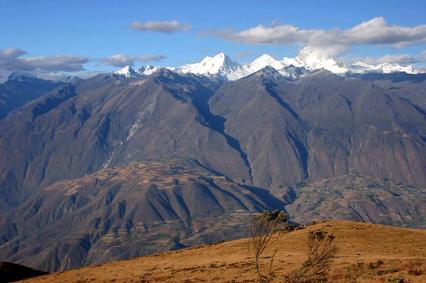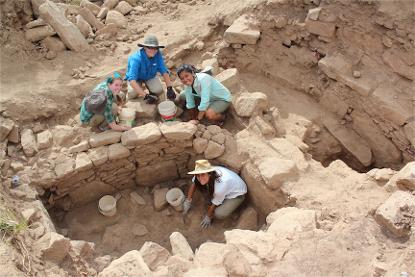

PIARA Research
A major component of PIARA's mission is to conduct archaeological investigations that reveal the rich prehistory of the highland Andes in Ancash, Peru. Focused on the province of Huaylas, PIARA has performed surveys in the northern Callejón de Huaylas valley and excavations, mapping, and material analysis at the archaeological complexes of Hualcayán, Pariamarca, and Aukispukio. The majority of our work has focused on Hualcayán, where ongoing research is uncovering four millennia of ritual and agricultural practice in a mound, plaza, and terrace complex called Perolcoto, conducting a funerary and bioarchaeological study of the site's numerous chullpa and machay tombs, and investigating domestic life in residential patio groups.
We have also we collaborated with the American Climber Science Program on a USAID-funded program to explore how people living in the Cordillera Blanca are experiencing climate change. The glaciers of this mountain range, which have provided ample water for communities across Ancash for thousands of years, are rapidly disappearing.

PIARA is a regionally-focused and collaborative archaeological project that grew out of the research objectives and dissertation work of principal investigator Rebecca Bria (University of Minnesota–Twin Cities; Ph.D. Vanderbilt University). The overarching goal of the research is to understand longterm shifts in social and political organization in highland Ancash, Peru by examining transformations in ritual, economy, and ecology. Since 2009, this work has been carried out in collaboration with Peruvian archaeologists and PIARA co-directors Elizabeth Cruzado, Felipe Livora, and Cora Rivas as well as with several material specialists and student collaborators. Learn more...
PIARA Archaeological Field School:
Analytical Methods in Archaeology
Join PIARA in the spectacular Andean highlands of Peru! We offer an exciting field school course where participants gain experience in a variety of fundamental field and laboratory skills. In this field experience, participants will excavate, map, and analyze artifacts from prehistoric architecture dating between 2500 BC and AD 1500 in addition to gaining experience with a range of specialized methods. Learn more...
Translate This Page
All PIARA artwork, photos, and web and flyer designs are copyright © Rebecca E. Bria

